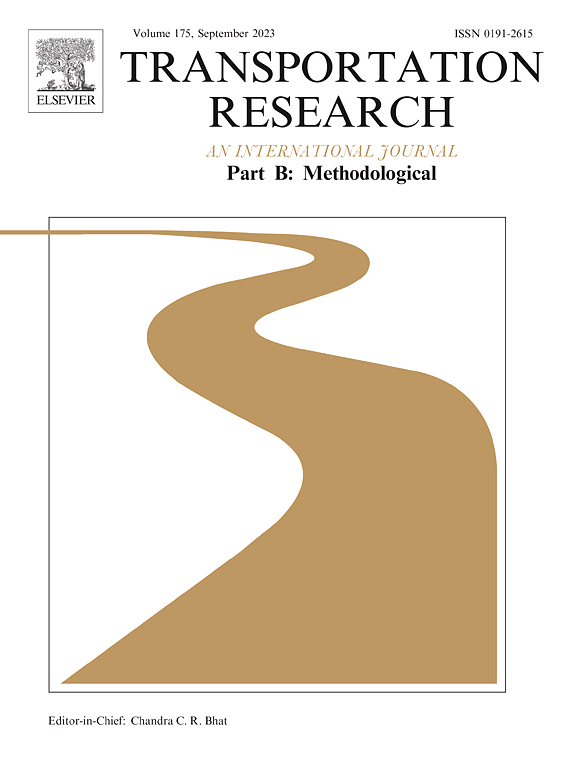An exact and heuristic framework for rolling stock rescheduling with railway infrastructure availability constraints
IF 6.3
1区 工程技术
Q1 ECONOMICS
引用次数: 0
Abstract
Disruptions on the railway network can lead to reduced availability of the railway infrastructure, which requires rolling stock dispatchers to adjust the planning of the rolling stock. In this paper, we develop fast rolling stock rescheduling methods which ensure feasibility with respect to the availability of the railway infrastructure. In particular, we explore the option of performing shunting movements at stations where shunting does not take place in current practice, due to the large number of trains that pass through or due to the complexity of the station layout. We introduce an exact rolling stock rescheduling algorithm and an iterative heuristic, which alternate between two mathematical formulations, namely one that creates an interim rolling stock schedule and one that tries to fit the suggested shunting movements between the remaining railway traffic. We test our solution approach with instances that contain complete railway blockages on the Dutch railway network. We successfully identify feasible shunting movements and find an average improvement in the objective function of 19% over the rolling stock schedule that would be obtained if performing shunting movements at the considered stations is prohibited.
考虑铁路基础设施可用性约束的车辆重新调度的精确启发式框架
铁路网络的中断会导致铁路基础设施的可用性降低,这就要求铁路车辆调度员调整铁路车辆的规划。在本文中,我们开发了一种快速的铁路车辆调度方法,该方法在保证铁路基础设施可用性的前提下是可行的。特别是,我们探讨了在当前实践中由于大量列车经过或由于车站布局复杂而无法进行调车的车站进行调车运动的选择。我们引入了一种精确的铁路车辆重新调度算法和迭代启发式算法,它在两种数学公式之间交替,即一种创建临时铁路车辆调度,另一种试图适应剩余铁路交通之间建议的分流运动。我们用荷兰铁路网上包含完整铁路阻塞的实例来测试我们的解决方案方法。我们成功地确定了可行的调车运动,并发现如果禁止在考虑的车站进行调车运动,目标函数将比铁路车辆调度平均改进19%。
本文章由计算机程序翻译,如有差异,请以英文原文为准。
求助全文
约1分钟内获得全文
求助全文
来源期刊
CiteScore
12.40
自引率
8.80%
发文量
143
审稿时长
14.1 weeks
期刊介绍:
Transportation Research: Part B publishes papers on all methodological aspects of the subject, particularly those that require mathematical analysis. The general theme of the journal is the development and solution of problems that are adequately motivated to deal with important aspects of the design and/or analysis of transportation systems. Areas covered include: traffic flow; design and analysis of transportation networks; control and scheduling; optimization; queuing theory; logistics; supply chains; development and application of statistical, econometric and mathematical models to address transportation problems; cost models; pricing and/or investment; traveler or shipper behavior; cost-benefit methodologies.

 求助内容:
求助内容: 应助结果提醒方式:
应助结果提醒方式:


